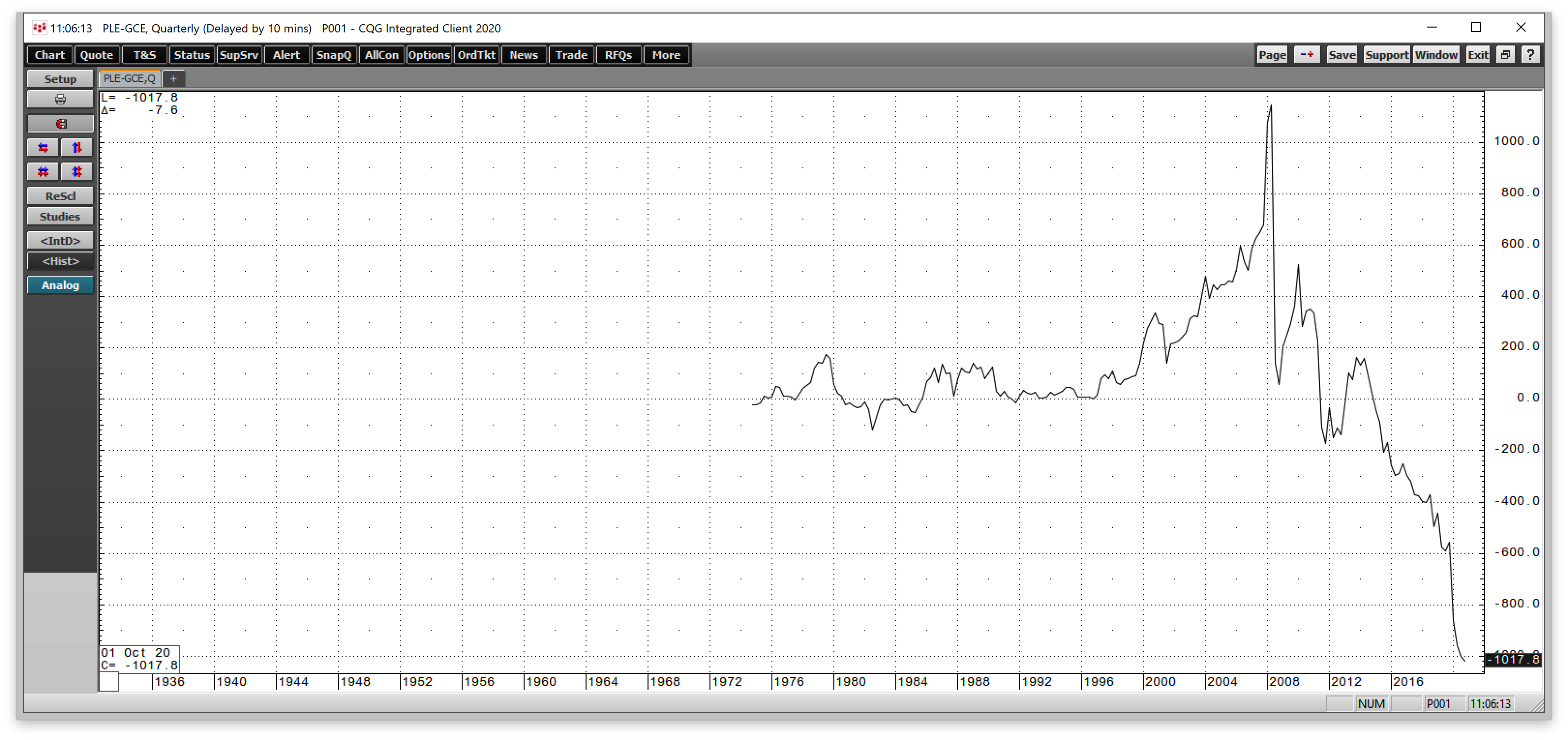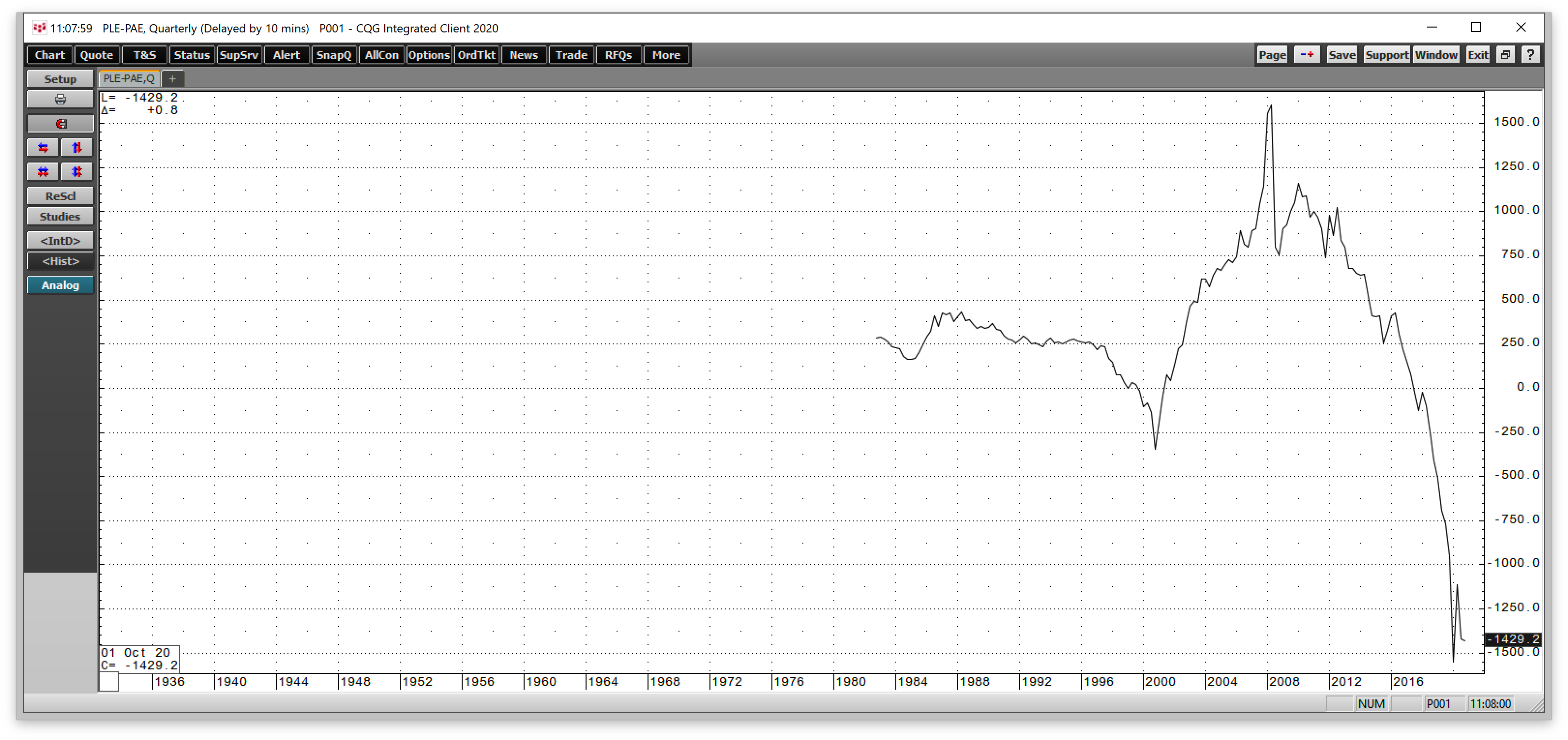This article was written exclusively for Investing.com.
- Platinum the only precious metal that's lower since the end of 2019
- Years of lagging the sector
- An industrial metal with many applications
- Platinum also an investment metal but every dog has its day
There was a time when platinum was referred to as “rich person’s gold.” Indeed, until 2014, most of the time, platinum traded at a higher price than gold.
The lowest discount for platinum before 2011 was just over $120 per ounce. It's a precious metal that's rarer than gold.
While gold production occurs in many countries worldwide, the vast majority of platinum comes from South Africa and Russia. Most South African output is primary production, while Russian platinum is mostly a byproduct of nickel from Siberia's Norilsk region.
Both gold and platinum have historical ties to the financial markets as hard assets; platinum’s high resistance to heat and density makes for many industrial applications. As well, both gold and platinum are metals used by the jewelry industry.
Precious metals have been in raging bull markets. Gold reached an all-time high of over $2000 in August. Silver more than doubled in value since the March 2000 low. Palladium and rhodium, two “Platinum Group Metals,” or PGMs, have seen their prices soar.
Meanwhile, platinum continues to be the laggard of the precious metals sector. The price of the rare metal was below the $900 per ounce level at the end of last week.
Platinum the only precious metal that's lower since the end of 2019
At the close of the third quarter of 2020, gold, silver, and palladium had all gained over 22% since the end of 2019. Palladium was 22.06% higher, while gold moved 23.92% to the upside. Volatile silver was the leader of the pack of the metals that trade on the COMEX and NYMEX divisions of the Chicago Mercantile Exchange with a 31.10% increase on the year.
However, the most impressive gains were in the rhodium market. The platinum group metal that only trades in the physical market moved from around $5,850 at the end of 2019 to a midpoint of $12,100 per ounce on Sept. 30, a gain of over 100%.
Rhodium is a byproduct of platinum output, but the namesake metal of the PGMs has not fared as well as the other precious metals. As of Sept. 30, the platinum futures that trade on NYMEX were 7.25% lower since the final trading day in 2019.
Years of lagging the sector
Platinum has lagged the precious metals sector for years. The metal that one commanded a premium to gold now trades at a price below the price differential between the two metals. October platinum futures on NYMEX settled at $901 on Sept. 30.

Source, all charts: CQG
The quarterly chart highlights that platinum fell to a discount to gold in 2014 and kept on falling. At the end of Q3 2020, an ounce of platinum was trading at $1017.80 per ounce below the price of an ounce of gold. The discount moved to a record low of $1076.80 on Aug. 4.
Platinum commanded an over $1600 per ounce premium over palladium in 2008. Over the next dozen years, the pendulum swung the other way. 
The chart illustrates that platinum fell to a discount to palladium in 2017 and was $1429.20 below its sister metal on Oct. 2.
An industrial metal with many applications
Platinum has a history as a financial asset, but its price action tells us that it seems to have lost its luster compared to gold and silver. When it comes to platinum’s role as an industrial metal, its price action is an enigma if you examine its properties.
Palladium has a density of 12.023 g/cm cubed and a melting point of 2830.82 degrees Fahrenheit. Rhodium’s density is 12.41 g/cm cubed and has a melting point of 3567 degrees Fahrenheit. Platinum is a denser metal at 21.45 g/cm cubed. It’s melting point at 3214.90 degrees Fahrenheit is between palladium and rhodium. The demand for palladium in automobile catalytic converters has boomed, but the price differential between platinum and palladium has not created any substantial substitution.
Meanwhile, platinum’s price weakness has led to a decline in output over the past years, causing a shortage in the illiquid rhodium market. Rhodium is trading at its all-time peak at over $12,000 per ounce. And platinum’s price woes created a bullish monster in the palladium market.
Platinum has not attracted speculative buying from a financial perspective despite gold’s move to a record high at over $2000. Spectacular bull markets in palladium and rhodium have not fostered substitution by industrial users. PGM users include the automobile, jewelry, electronic, oil and petrochemical refining, electronic, and medical sectors.
Platinum also an investment metal but every dog has its day
Recent negative developments for platinum are nothing short of ironic. Platinum is stronger and more durable than gold. It's also one of the densest elements, six times denser than a diamond.
Platinum is an investment-grade and an industrial metal, but its price action has been nothing short of dreadful compared to the other precious metals. It's no longer “rich person’s gold,” and it now risks losing its “precious” status. In the precious metals sector, platinum has been nothing short of a mangy dog with fleas for those who have bought the metal and watched as its peers exploded higher while platinum has yielded nothing but a loss so far in 2020.
In the 1600s, William Shakespeare wrote, “The cat will mew and dog will have his day.” In Act 5, Scene 1 of Hamlet, the Prince of Denmark uttered the famous quote.
Platinum’s value proposition is compelling, but its performance has been nauseating. The industrial and precious metal has been frustrating for investors and traders looking for it to follow its precious metal peers.
Watching gold, silver, palladium, and rhodium rally while platinum languishes below $900 per ounce has been a tragedy. For those that continue to hold platinum, think of Hamlet—this dog will eventually also have its day.
